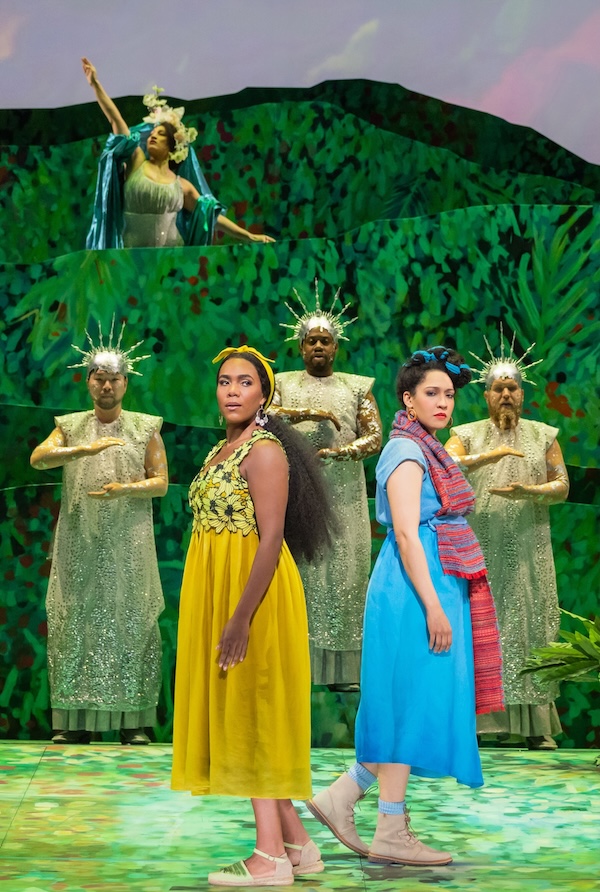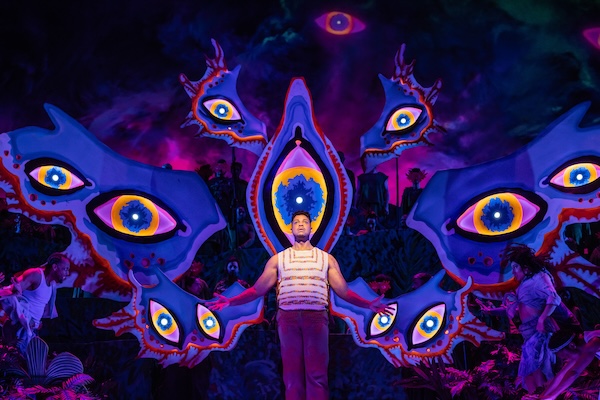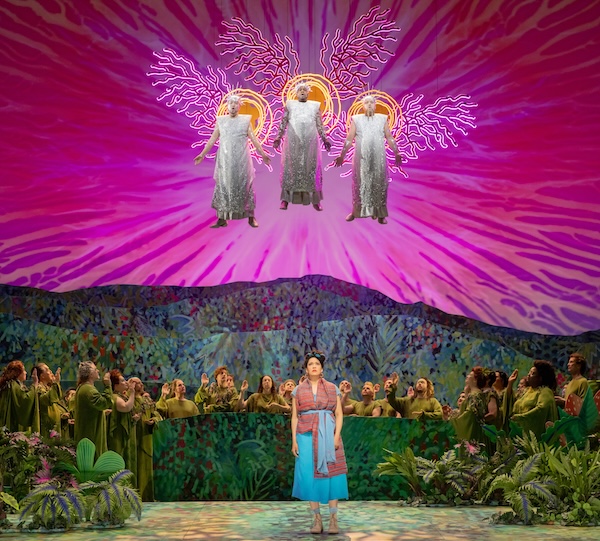Performances
Ax’s artistry illuminates familiar Beethoven, rare Schoenberg
Carnegie Hall’s Fall of the Weimar Republic festival has brought a […]
Neuwirth premiere disappoints while Søndergård debut impresses with Philharmonic
Thomas Søndergård made his debut with the New York Philharmonic on […]
MasterVoices’ superb cast provides fine advocacy for Gordon’s “Grapes of Wrath”
Spectacular forces crammed the Carnegie Hall stage Wednesday night: there was […]
Constantinople and friends make a club jam out of ancient music from Persia and Spain
Nothing gives us a more immediate and relevant idea of cultures […]
Honeck and Rana bring fresh urgency to Russian favorites with Philharmonic
Rachmaninoff’s Piano Concerto No. 2 and Tchaikovsky’s Symphony No. 5 are […]
Articles
Top Ten Performances of 2023
1. Pierre-Laurent Aimard in music of Ligeti, Beethoven, Chopin and Debussy. […]
Critic Picks for 2023-24
“Dopplegánger.” Jonas Kaufmann and Claus Guth. Park Avenue Armory. September 22-28. […]
Opera review
Spectacular visuals make for a scenic feast in Met’s “El Niño”

John Adams’s El Niño arrived at the Metropolitan Opera on Tuesday evening in Lileana Blain-Cruz’s stunning production, which blazes with color, movement, and meaning. It was a night for debuts at the Met, not only for Adams’s opera-oratorio and the director, but also conductor Marin Alsop, soprano Julia Bullock, and bass-baritone Davóne Tines.
El Niño premiered at the Théâtre du Châtelet in Paris in 2000. The first New York performance was at the Brooklyn Academy of Music in 2003 by the Los Angeles Philharmonic under Esa-Pekka Salonen. A scaled-down version dubbed El Niño: Nativity Reconsidered was presented in 2018 at The Cloisters of the Metropolitan Museum of Art and then last December at the Cathedral of Saint John the Divine. Bullock was the catalyst for that adaptation.
In El Niño, Adams and his long-time collaborator Peter Sellers, retell the story of the Nativity. Using a wide range of sources spanning from Medieval texts to Latin American poets, El Niño begins with the Annunciation and concludes with the Holy Family’s Flight into Egypt. The narrative includes the story of the Three Kings bearing gifts, as well as the Slaughter of the Innocents.
Blain-Cruz is the resident director of the neighboring Lincoln Center Theater. When Peter Gelb, the Met’s general manager, approached her about staging an opera at the Met, she proposed El Niño. She had already been hired by the Met to direct a new opera by Missy Mazzoli, Lincoln in the Bardo, an adaptation of the George Saunders novel for the 2026-27 season. Blain-Cruz’s star is burning too brightly and too nearby to let her debut wait that long.
Adams and Sellers wove threads of the immigrant story into El Niño, but Blain-Cruz does not inject the present-day border crisis into her concept. She focuses rather on the journey of the two Marys, through which the story is told, envisioning one to be of the land as portrayed by Bullock and the other of the water depicted by mezzo-soprano J’Nai Bridges. The latter finds Bridges being tossed about on a crowded boat and later suspended in one high above the stage.
This production runs wild when it comes to color, motion, and imagery, but it is at one with the music. Adam Rigg’s sets are fairly traditional, but are awash with bold, electrifying hues which speak more of Latin America than the Middle East of Biblical times. Rivers are created by lengths of bright blue cloth rippling across the stage. Mood is established through Yi Zhao’s skyscapes which range from bursting stars to announce the birth of the Christ Child to ominous clouds which portend of Herod’s treachery and cruelty.
Blain-Cruz’s imagination overflows in the staging. Huge pink morning glories with quivering stamens appear arise from green hills. The Child Jesus confronts fanciful dragons, propelled expertly and gracefully by puppeteers, which enchant rather than menace. (This story didn’t make in into the official version of the Bible.) Marjani Forté-Saunders’s choreography relies heavily on upper-body movement and casts a surrealist, primitive energy to the action.
Montana Levi Blanco’s costumes range from green, vegetation-inspired ones for the chorus to glittering silver robes for the three countertenors who collectively appear as the Angel Gabriel. At one point, they are simultaneously transported skywards to be embraced by illuminated halos. They don more somber, contemporary Middle Eastern garb for the Magi.
Three different images of the Virgin Mary—an Indigenous Mary, a Tropical Mary, a Golden Mary—appear throughout. The Golden Mary sports a particularly magnificent headdress with sparkling gold rods forming a glittering halo. This Mary was plucked directly from a plinth in a Mexican Baroque church.
Blain-Cruz gets a bit heavy handed when the story shifts to depicting Herod. Tine’s Herod appears in a dress military uniform, his chest emblazoned with medals, on a towering statue of the king himself. It’s out of sync with the more subtle touches the director generally employs. The massacre of the children, however, is accomplished with a realistic, ruthless, heart-rendering simplicity.
Bullock and Bridges strike different personas as the two Marys. Bullock’s Mary is sensitive and often fearful, which she expresses through her actions and voice. Bridge’s Mary is more forthright and bold, with her challenges coming as much from adventure, as opposed to internal conflict of a young woman called upon to serve an unseen god.
The emotional connection between the two singers with very different instruments was visceral. Bullock etched Adam’s vocal line with an almost ethereal purity, as opposed to the richness and depth with which Bridges sang. They contrasted and complemented each other perfectly in all ways.
Tines does triple duty as Joseph, Herod, and God. The intensity of his resounding bass-baritone is mirrored in his acting. He created an especially complex Joseph, who has to cope with the pregnancy of his young wife. Adams gave God a voice in “Shake the Heavens,” an aria directly inspired by “Thus Saith the Lord” from Handel’s Messiah. Tines’s voice resounded through the hall as he sang Adams’ equally brilliant word painting of the fiery text.
Countertenors Key’mon W. Murrah, Siman Chung, and Eric Jurenas collectively created a glamourous, otherworldly Gabriel. The distinct timbers of their voices combining to create an intriguing, unified whole. They were far more earnest and real-to-life as the Three Kings.
El Niño finds Adams at his most lyrical, but the relentless churning of his singular, repetitive style is ever present. The precision in rhythm and tuning called for is a prefect fit for the Met’s chorus and orchestra. Through the slightest variation in tempo or volume, Alsop breathed life and drama into the music.
The forces on stage were huge, including the Met Chorus and Young People’s Chorus of New York City, as well as dancers and cast. Musically, however, Alsop maintained a steady sense of balance and control throughout the performance. Adams integrated electronic elements in the score, which under Alsop’s baton became a subtle element of the soundscape, and never overpowered the singers or other instruments.
The composer was the final person to appear on stage during the curtain calls. El Niño is the fourth of his works to be staged at the Met, and appears to have arrived at just the right time judging from the ovations which he and all involved received.
El Niño runs through May 17. metopera.org
Calendar
April 24
New York Philharmonic
Spring Gala
Gustavo Dudamel, conductor
[…]
News
Met’s 2024-25 season will bring new “Aida” and “Salome,” four contemporary operas
The Metropolitan Opera will continue its expansion into contemporary opera in […]
Carnegie Hall to mix Latin music with cornerstone favorites in 2024-25
Carnegie Hall executive and artistic director Clive Gillinson introduced the 2024-2025 […]








